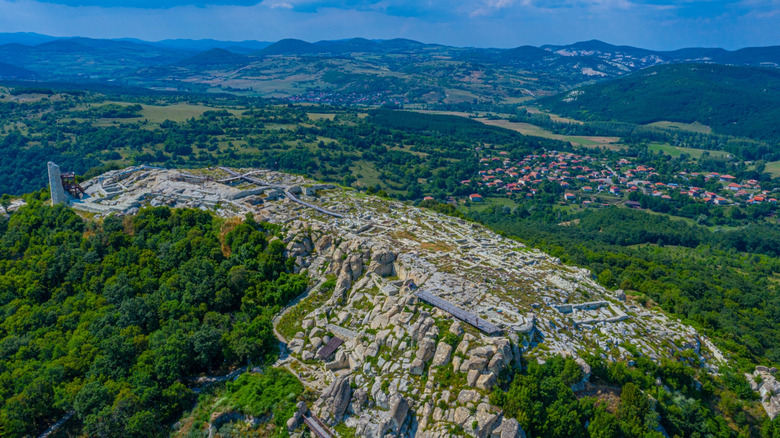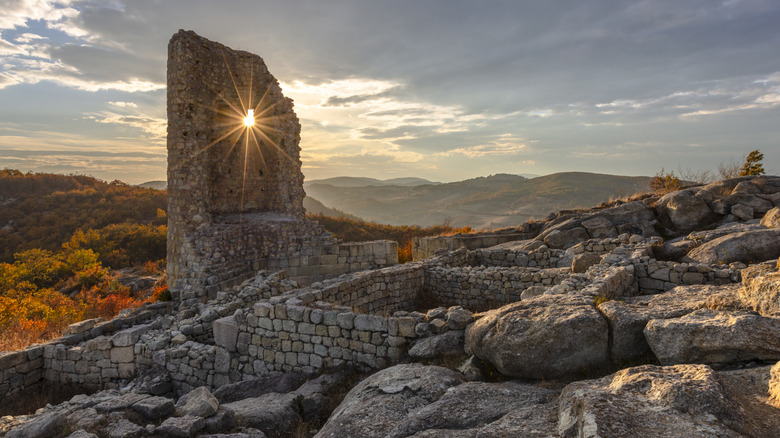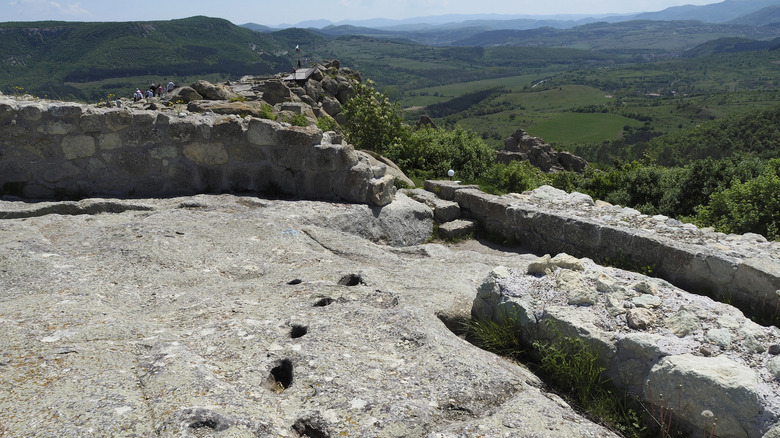A Mountain City In Bulgaria With Ancient Mysteries Is Known As 'The Machu Picchu Of Europe'
Humanity has long been fascinated by the ancient remains of former civilizations. Archaeological ruins around the world give us clues into the lives of our long-dead ancestors and the history of the world. Exploring the ruins of long-lost cities and settlements has given us insight into humans' first upright steps, the kingdom of Alexander the Great, and the mysterious religions that built temple complexes in Central America — and that's just the shortlist!
Some of the most famous sights are known worldwide and top many a bucket list, like the Great Pyramid of Giza in Egypt or Machu Picchu in Peru. However, these famed ruins are just a few of the many sites that litter our globe: some well-known and researched, some hardly visible, some half-buried by modern life, but many more that are also worth exploring. One less crowded alternative to Machu Picchu, which is nearly as breathtaking, can be found in Europe — and has in fact earned the nickname "The Machu Picchu of Europe." Deep in the forested mountains of Bulgaria lies the ancient Thracian city of Perperikon. This ancient rock city lies above Bulgaria's Perpereshka River in the Eastern Rhodope Mountains, about three hours southeast of Bulgaria's capital, Sofia.
History of Perperikon
Bulgaria, which tends to receive fewer visitors than its more famous neighbors, is considered one of Europe's hidden gems. It's also gaining recognition for its history and ruins, including some of the oldest archaeological sites in Europe — not to mention one of the oldest continually-settled European cities, currently known as Plovdiv. Bulgaria is also home to the once-Greek resort town of Sozopol, the oldest settlement on the western shores of the Black Sea.
In addition to these still-thriving cities, Bulgaria is home to many ruins dating back to the Roman, Byzantine, and Thracian periods. One of the most notable is the ancient Perperikon, known as the "Machu Picchu of Europe" or the "Stone Pompeii." Perperikon, first established by the mysterious Thracians in 5,000 B.C., with more extensive developments occurring circa 1,500 B.C., is one of the only known Thracian cities, as the civilization was generally assumed to live in smaller settlements. Perperikon was built around a carved rock shrine, likely the site of fire rituals, and is theorized to be the location of the legendary Temple of Dionysius during Roman times.
Perperikon, the largest megalithic settlement in the Balkans, was inhabited by Romans and Christians until the Ottomans invaded, resulting in the town's abandonment in the 14th century. It was left to ruin until its rediscovery in the early 1980s. Most of the extensive excavations occurred after 2000, however, and continue to this day. Also known as the "Ancient Rock City," much of the settlement, including streets, sewers, and even graves, was entirely carved from the underlying stone. Visitors can explore the enormous "Palace," sit on the rock-hewn throne, and see the remains of an early Christian basilica and a medieval tower.
The where, what, and how of Perperikon
Nowadays, the remains of Perperikon loom over the valley, but from a distance, the only thing visible is the distinctive medieval tower; the rest of the ruins resemble a rocky ridge until closer inspection. Visitors can hike up to the mountaintop (a steep climb, so bring water and wear good shoes), and scramble over most of the site (except for any roped-off sections). Most of the artifacts excavated from the site can be seen at the History Museum in the nearby town of Kardzhali, around 12 miles (20 km) away. The museum also provides further information on Perperikon, the Thracians, and the history of the area.
There are many beautiful ancient cities to visit around the world, and Perperikon is undoubtedly one of them. It's also not that difficult to access, especially compared to some, like Machu Picchu, which is deep in the remote Andes. Plenty of tours visit Perperikon, and getting a guide can be fruitful as there isn't any information on site. It's also straightforward to get a car and spend the day there at your leisure. Parking is at the base of the ruins in the small, picturesque village of Gorna Krepost. Note that while there is little public transportation in the area, there is a twice-daily train ride that costs only $1 to $4, or you can hire a taxi from Kardzhali for about $12 to $15 dollars (one way).


